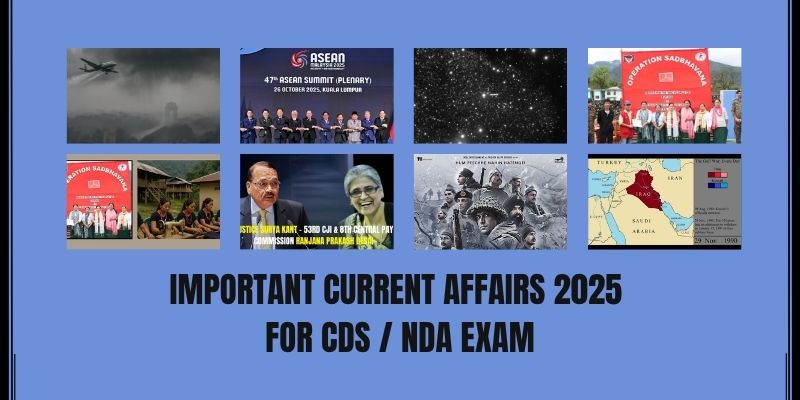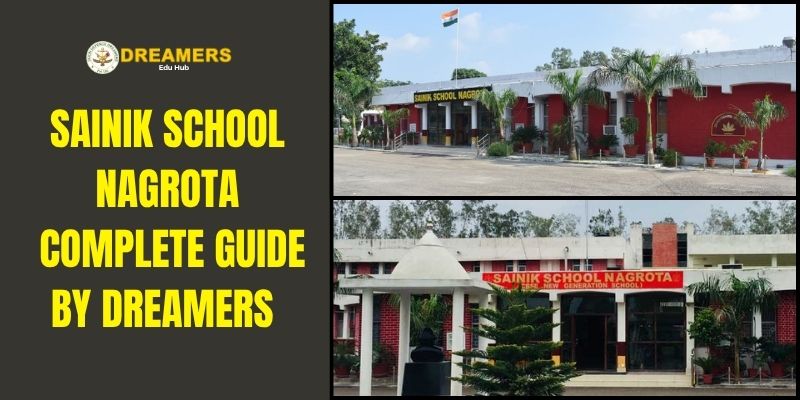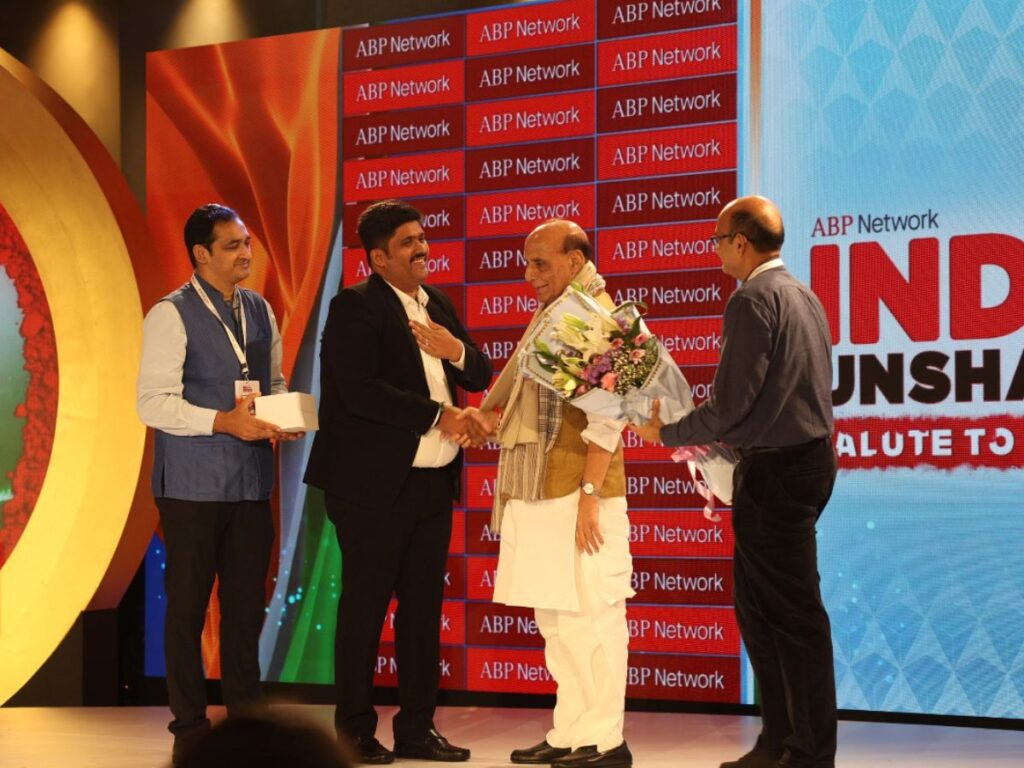Introduction
For any student preparing for defence exams, civil services, SSC or banking, staying updated with current affairs is as important as learning formulas or grammar rules. News is not just information; it shows how science, politics, defence and diplomacy are working in real life. When you revise current affairs in a structured way, it becomes easy to remember names, dates and places during the exam.
In this blog we will revise eight important topics: artificial rain in Delhi, East Timor joining ASEAN, the new Chief Justice and the 8th Pay Commission, Operation Sadbhavana and the Ollo festival, the interstellar object 3I ATLAS, the Election Commission’s Special Intensive Revision, the movie 120 Bahadur based on Rezang La, and the history of the Kuwait crisis. These topics will strengthen your current affairs notes and also help you in interviews and group discussions where recent issues are discussed.
1. Artificial Rain in Delhi – Cloud Seeding to Fight Pollution
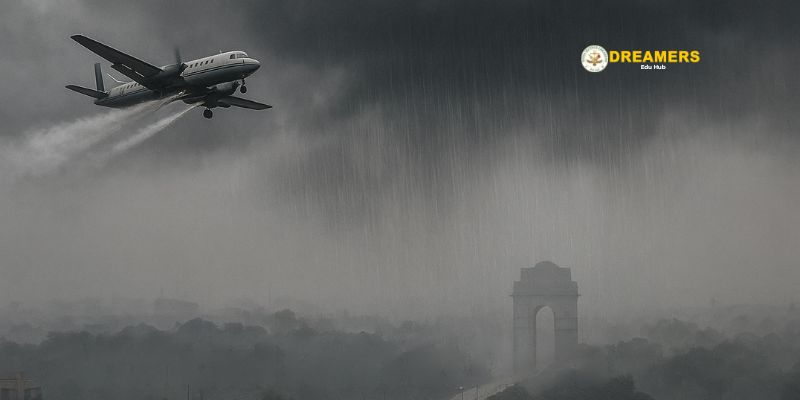
In recent current affairs, Delhi has started using artificial rain to fight its dangerous winter pollution. Artificial rain is created by a technique called cloud seeding. In this method, a small aircraft flies inside suitable clouds and sprays tiny particles like silver iodide, potassium iodide, dry ice or salt. These particles act as “seeds.” Water vapour in the cloud sticks to them, forms bigger droplets and, if conditions are right, those droplets become rain.
The Delhi government has signed an agreement with IIT Kanpur to run cloud-seeding trials over north and north-east Delhi. The plan is to conduct five trials, each costing around ₹60–65 lakh, with a total budget of about ₹3.2 crore. The idea is that even a light spell of rain can wash away dust and smoke from the air and temporarily push down the Air Quality Index. In some trials, there was no real rainfall over the city, but monitoring stations still recorded a small drop in pollution where seeding was done, because the droplets in the cloud helped capture particles.
However, scientists are divided on this current affairs experiment. Cloud seeding works only if there are the right kinds of clouds at the right height, containing enough moisture. In Delhi’s winter, skies are often clear or have thin fog-type clouds that do not respond well. Experts also warn that artificial rain does not solve the root causes of pollution—vehicles, construction dust, industry and stubble burning. It is at best a short-term relief. For exams, remember: technique = cloud seeding, partner = IIT Kanpur, objective = reduce pollution, challenge = depends heavily on weather and cannot replace long-term solutions.
2. East Timor Becomes the 11th Member of ASEAN
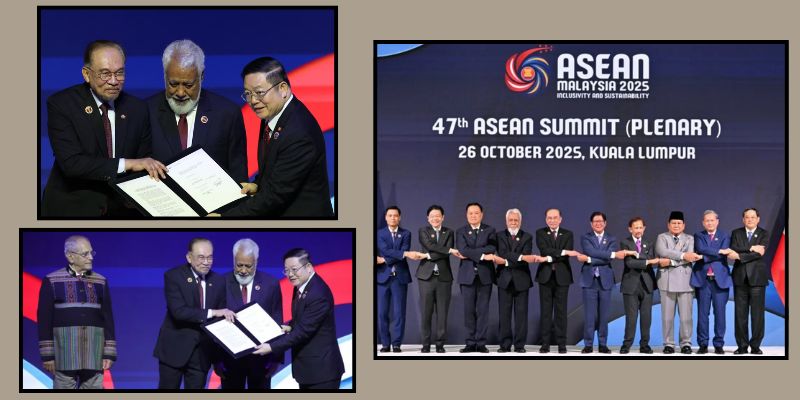
A very important international current affairs development is that East Timor (Timor-Leste) has officially become the 11th member of ASEAN. ASEAN is the Association of Southeast Asian Nations, a regional group that earlier had ten members like Indonesia, Singapore, Vietnam and Thailand. East Timor applied for membership in 2011, was given observer status in 2022, and finally got full membership in October 2025, after a long 14-year wait.
East Timor is Asia’s youngest country. It gained independence from Indonesia only in 2002, after years of conflict and United Nations peacekeeping. Its economy is small—around 2 billion dollars—but its location is strategic, sitting near important sea routes between the Indian and Pacific Oceans. By joining ASEAN, East Timor can now take part in regional free-trade agreements, attract more investment, get support for infrastructure projects and have a stronger voice in diplomacy.
For exam notes on current affairs, remember these points:
East Timor = 11th ASEAN member, first expansion since Cambodia joined in 1999.
Capital: Dili; main language: Tetum and Portuguese; majority Christian.
Membership helps East Timor economically and politically, and also shows ASEAN’s policy of including small but democratic neighbours.
3. Justice Surya Kant – 53rd CJI & 8th Central Pay Commission

In Indian polity current affairs, President Droupadi Murmu has appointed Justice Surya Kant as the 53rd Chief Justice of India (CJI). He will take oath on 24 November 2025 after the retirement of CJI B.R. Gavai. Justice Surya Kant earlier served as Chief Justice of the Himachal Pradesh High Court and as a judge of the Punjab and Haryana High Court before joining the Supreme Court in 2019.
He has been part of several important benches, including cases on the Prevention of Money Laundering Act, electoral bonds, environmental issues and the rights of farmers and marginalized groups. Commentators describe him as a judge who focuses on access to justice, protection of civil liberties and strong reasoning in judgments. As CJI, he will control the roster of cases, head the collegium for appointment of judges, and guide the Supreme Court’s response to future constitutional current affairs such as data protection, federal disputes and electoral reforms.
Connected to this, the government has also set up the 8th Central Pay Commission. The chairperson is Justice Ranjana Prakash Desai, a retired Supreme Court judge who earlier headed the Delimitation Commission and the Press Council of India. The Pay Commission will study salaries, allowances and pensions of central government employees and defence personnel, and then recommend a new pay structure, likely to be implemented towards the end of this decade. For exams, you should know that pay commissions normally come every 10 years, affect lakhs of employees and have a big impact on the budget. This is a classic current affairs point where polity, economy and administration meet.
4. Operation Sadbhavana and the Ollo Tribe of Arunachal Pradesh

From the North-East, a key current affairs topic is Operation Sadbhavana in Arunachal Pradesh. “Sadbhavana” means goodwill. Under this programme, the Indian Army and paramilitary forces like the Assam Rifles run development and welfare projects in remote border villages. They help build classrooms, hostels and healthcare facilities, organize medical camps, distribute study material and support small-scale livelihoods. The idea is to improve the quality of life in far-flung areas and strengthen trust between the forces and local communities.
One community recently in news is the Ollo tribe from Tirap district of Arunachal Pradesh, close to the India–Myanmar border. The Ollo people are recognized as a sub-tribe of the Nocte Nagas. They have their own language, traditional dress and festivals. An important festival is Woraang (also written Worang), which is usually held around March. It celebrates agriculture, community unity and respect for ancestors, with dances, songs and feasts.
The Khonsa Battalion of Assam Rifles has started a skill-based training programme for Ollo women under Operation Sadbhavana. Women are trained in tailoring, food processing, handicrafts and basic financial literacy so they can earn an income and become more self-reliant. For UPSC-type current affairs questions, note: Ollo tribe – Arunachal Pradesh (Tirap), border with Myanmar, linked to Operation Sadbhavana and women-empowerment projects.
5. 3I/ATLAS – The Third Interstellar Visitor
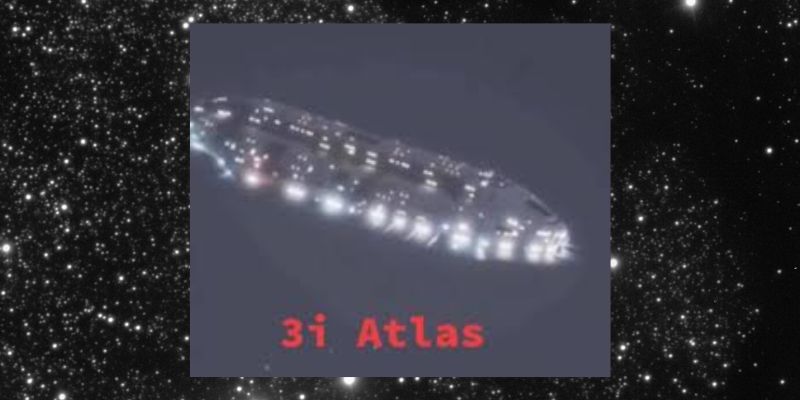
Space-science current affairs has been dominated by 3I/ATLAS, a new interstellar comet. It was discovered in July 2025 by the ATLAS survey telescope in Chile. The “3I” in its name shows that it is the third interstellar object ever detected in our Solar System, after 1I/ʻOumuamua (2017) and 2I/Borisov (2019). Scientists confirmed it is interstellar because its orbit is strongly hyperbolic, meaning it is not bound to the Sun’s gravity and will pass through only once.
Observations from ground telescopes, the James Webb Space Telescope and other spacecraft suggest that 3I/ATLAS is roughly 10–11 km wide, travels at more than 130,000 km per hour, and may be older than Earth, perhaps 7 billion years old. It likely formed around another star in the direction of the constellation Sagittarius and was later thrown out of that system. As it approaches the Sun, it releases gas and dust, forming a tail like a normal comet. Some scientists, including Harvard professor Avi Loeb, have speculated whether its behaviour could hint at artificial or engineered origin, but the mainstream view is that 3I/ATLAS is a natural comet shaped by radiation and gravitational forces over billions of years.
For exam-ready current affairs, remember:
3I/ATLAS = third interstellar object, first two are ʻOumuamua and Borisov.
Discovered July 2025 by ATLAS telescope.
Extremely hyperbolic orbit, size around 7–11 km, possibly the oldest comet ever studied.
Gives rare chance to compare our Solar System with others.
6. Special Intensive Revision (SIR) of Electoral Rolls, 2025
In democratic current affairs, the Election Commission of India (ECI) has launched a Special Intensive Revision (SIR) 2025 of electoral rolls in a group of 12 states and Union Territories. Electoral rolls are the official lists of voters for every polling station. Over the years, names can become outdated because people change homes, die or turn 18. Normally, the rolls are updated every year, but a Special Intensive Revision is a deeper, door-to-door exercise.
For SIR 2025, booth-level officers visit households, verify each voter, delete duplicate or wrong entries and add new eligible voters. A new feature is that the form asks people to locate their own or their relatives’ names from old rolls between 2002 and 2005, using an online database. This helps track migration patterns and detect fake entries. The SIR is being carried out state-wise with strict timelines so that error-free rolls are ready before upcoming assembly or local body elections.
Why is this important in current affairs? Because clean electoral rolls are the base of fair elections. If bogus names remain, some people can vote multiple times; if genuine names are missing, citizens lose their basic democratic right. So, Special Intensive Revision links administration, technology and public participation in a very direct way.
7. 120 Bahadur – Film on the Battle of Rezang La
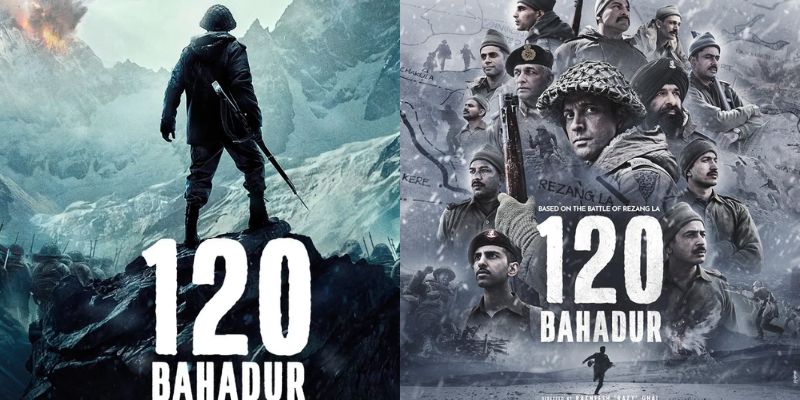
Defence-plus-culture current affairs includes the upcoming Hindi war film “120 Bahadur”. Directed by Razneesh “Razy” Ghai and produced by Excel Entertainment, the movie stars Farhan Akhtar as Major Shaitan Singh Bhati, along with Raashii Khanna and other actors. It is scheduled for theatrical release on 21 November 2025.
The film tells the story of the Battle of Rezang La, fought on 18 November 1962 during the Sino-Indian War. At a height of about 16,000 feet in Ladakh, 120 soldiers of Charlie Company, 13 Kumaon Regiment—mostly Ahir troops from Haryana—defended their post against an attacking force of nearly 3,000 Chinese soldiers. Almost all Indian soldiers fought till the last bullet; Major Shaitan Singh was posthumously awarded the Param Vir Chakra, India’s highest gallantry award. The film tries to recreate their courage, isolation in the snow, and sense of duty.
The movie has also created some current affairs controversy. Certain Yadav and Ahir community groups argue that the title should reflect the community’s contribution more clearly, and have demanded names like “120 Veer Ahir.” Protests and memorandums have been reported, but the makers say the film honours all soldiers equally. For exams, you only need to remember: film name, subject (Battle of Rezang La), hero (Major Shaitan Singh, PVC) and year of war (1962).
8. Kuwait – Geography and the Story of the Gulf War

Finally, a classic international current affairs topic is Kuwait and the Gulf War (1990–91). Kuwait is a small but extremely rich country in West Asia, on the north-west corner of the Persian Gulf. It shares land borders with Iraq to the north and west and Saudi Arabia to the south, with Iran across the Gulf waters. Most of Kuwait is desert, but it has huge oil reserves, making it one of the world’s wealthiest states in per-capita terms. The capital is Kuwait City.
Kuwait gained full independence from Britain in 1961. For a long time, it had friendly ties with Iraq, but disputes grew over oil fields and war debts after the Iran–Iraq war. On 2 August 1990, Iraq under Saddam Hussein invaded Kuwait with tanks and troops, quickly occupying the country. The United Nations condemned the invasion and imposed sanctions. Later, a US-led coalition of about three dozen countries prepared a military response.
After months of air strikes and negotiations, the coalition launched Operation Desert Storm in January 1991. Intense bombing and a brief ground war pushed Iraqi forces out, and Kuwait was liberated by the end of February. While retreating, Iraqi troops set fire to hundreds of oil wells, causing huge environmental damage. For India, the war created a separate chapter in current affairs—the government organised one of the largest air evacuations in history, bringing home around 1.7 lakh Indian workers from Kuwait and Iraq using nearly 500 flights in about two months.
Today, Kuwait has rebuilt its infrastructure and continues as a major oil exporter. But the memory of the invasion remains important because it changed West Asian politics, affected oil prices and showed how quickly regional conflicts can become global crises. Exam questions on this current affairs topic often ask: location of Kuwait, year of invasion, reasons behind Saddam’s move, name of the coalition operation, and India’s evacuation effort.
Final Revision Tips
All these stories—artificial rain in Delhi, East Timor joining ASEAN, Justice Surya Kant as 53rd CJI, the 8th Pay Commission, Operation Sadbhavana and the Ollo tribe, 3I/ATLAS, Special Intensive Revision of rolls, 120 Bahadur, and the Kuwait crisis—form a rich set of current affairs for 2025. Make one-page notes for each topic with headings: What, Where, When, Who, Why Important. Revise them weekly, mix them with static subjects (like geography or polity), and you will find current affairs questions in exams much easier to handle.

